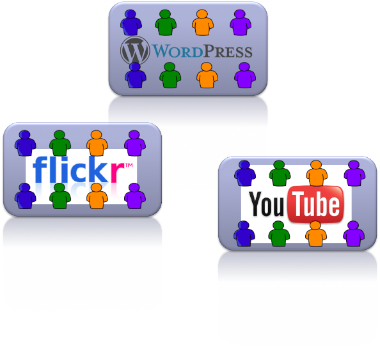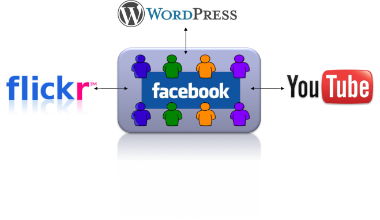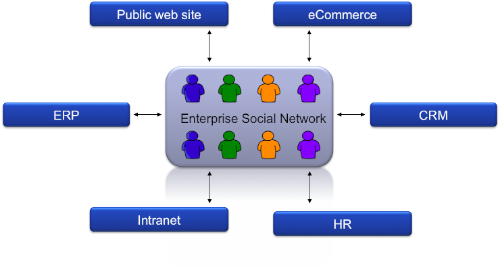The social business platform can be the system of engagement for any system of record. It would be wrong to think of your social business platform in isolation of other enterprise systems. Ask whether your social business platform can easily integrate with these systems and add a social layer.
In his book Dealing With Darwin, Geoffrey Moore suggests that most enterprise IT effort over the last decade has concerned “systems of record” which may provide an authoritative source of an organization’s data, but do little to enable employee interaction to create and use this data. Therefore, these need to evolve into “systems of engagement” to enable enterprises to communicate and collaborate better and use this data to make more effective business decisions.
For example, consider an HR system. This typically holds definitive data on employees, performance reviews, training classes attended, vacancies, benefits, etc. However, it provides little opportunity for discussion and collaboration around these records. For example:
- The HR system holds details of training and benefit providers. A social layer on top of this allows employees to discuss their experiences of these providers, enabling HR administrators to assess whether alternative providers should be sought.
- An employee performance review would be greatly enhanced by a social layer which allows a manager to seek feedback from people both inside and outside the organization who have worked with the employee.
Similarly, product, customer and order details held in an ERP system would also benefit from greater ability for employee collaboration, as would sales and customer service data in a CRM system.
To turn these into systems of engagement, they need to be supplemented by an enterprise social network which provides integration points for both reading and writing of social data. The social network needs to:
- Enable the system of record to request social data (discussions, blogs, user profile & social graph)
- Enable the system of record to report events to the social network, as these may form the basis of discussion.
- Connect in this way to multiple systems of record, to allow the social network to facilitate the free flow of data around the organisation.
Of course, many vendors of these systems of record will claim they are adding social features to their products. But can these truly claim to be social networks if they are tied to one particular system? Can a CRM system really provide collaboration capability for the whole company, not just users of the CRM? We have been here before. When portal software came to prominence in the early 2000s, many ERP, CRM and even business intelligence vendors claimed they had added portal capabilities to their products. But the very nature of a portal is to provide access to a wide range of systems through a single interface. If a portal only provides access to a single vendor’s system, it probably isn’t really a portal. And so it is with social layers on systems of record. If all this does is connect existing users of that system, it is not a true enterprise social network; it merely perpetuates the content- and process-centric nature of these systems, whereas our aim is a people-centric system.
This is perhaps best illustrated with an example from the world of consumer social networking. If someone posts a photo on Flickr, their friends can go to Flickr and post a comment. Similarly, a video on YouTube or a blog on WordPress. Each site hosts the content, and users have to go to each site to view and discuss the content, and need to establish networks of friends on each. While each has social features, it is still fundamentally a content-centric model.

Contrast this with Facebook. Users can post links to their Flickr photos, YouTube videos and WordPress blogs, but the discussion all takes place on Facebook with the same network of friends. This is people-centric model – it really doesn’t matter where the content is, as long as it can be discussed in the place where the people are.
 Similarly, an enterprise people-centric model will represent all relationships between employees in a single social network which can connected to many systems of record.
Similarly, an enterprise people-centric model will represent all relationships between employees in a single social network which can connected to many systems of record.

Systems of record need to add a social layer to empower users to make best use of the investment made in these systems. But adding social features to each system of record independently merely perpetuates the data silos that enterprise social networking aims to break down. A system of engagement needs to span multiple systems of record to allow the free flow of information around the organization.
